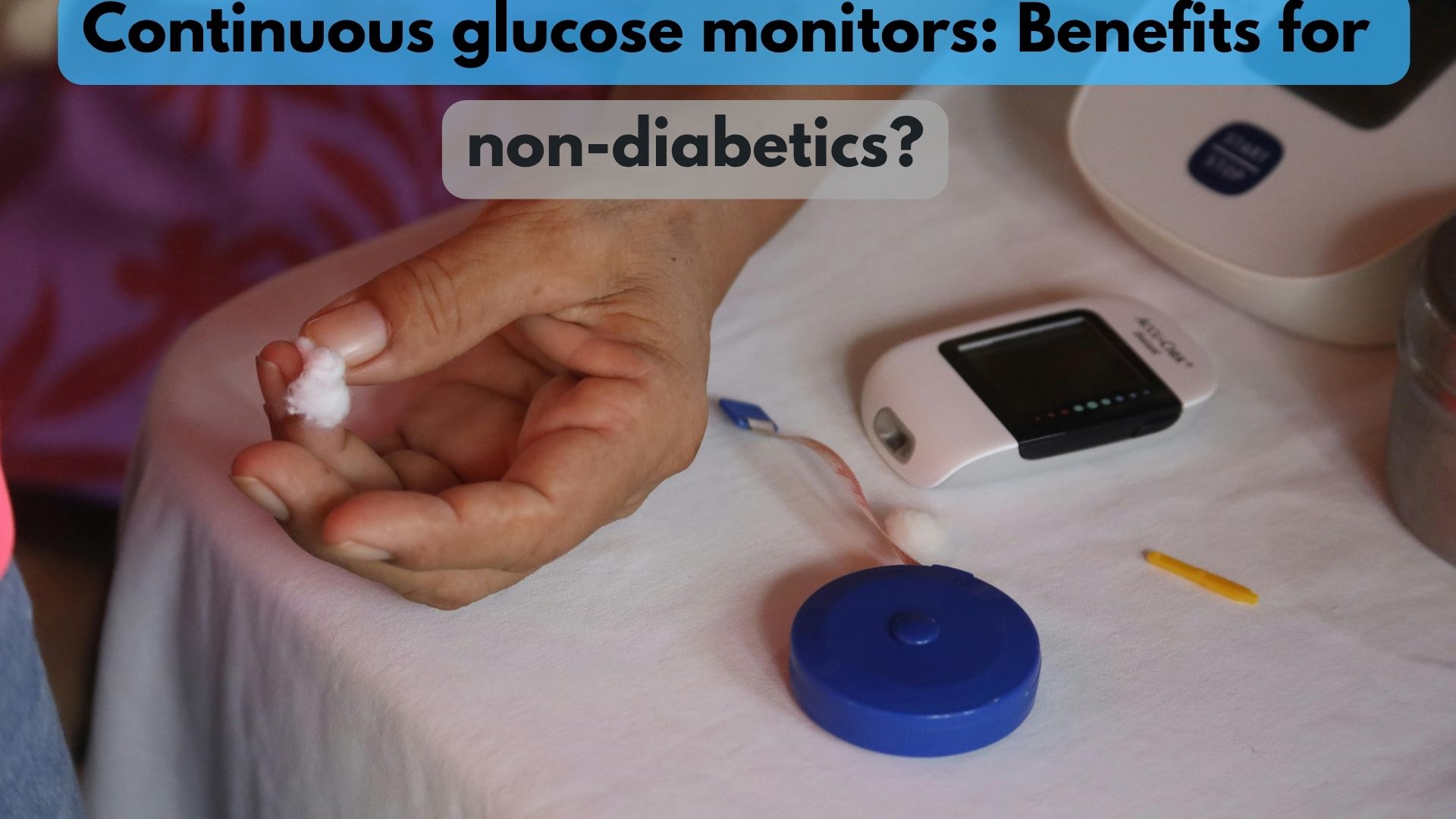Continuous Glucose Monitors: Benefits for Non-Diabetics in 2025 🩸📊
Continuous Glucose Monitors (CGMs) have traditionally been used by people with diabetes to track and manage their blood sugar levels. However, in 2025, CGMs are becoming increasingly popular among non-diabetics — including athletes, health enthusiasts, and those aiming to optimize their metabolic health.
This article explores how CGMs work, their benefits for non-diabetics, potential limitations, and the best options available today. You’ll also find helpful resources and internal links to related content on vounesy.com, such as Wearable Devices Guide and Health Tech Innovations.
🔍 What Is a Continuous Glucose Monitor (CGM)?
A Continuous Glucose Monitor (CGM) is a wearable device that continuously tracks glucose levels in real-time through a small sensor inserted under the skin (usually on the abdomen or arm). It provides detailed insights into how glucose levels fluctuate throughout the day based on factors like:
-
Food intake
-
Exercise
-
Sleep
-
Stress
-
Hormonal changes
CGMs can display data via smartphone apps, providing charts and analytics to help users understand their metabolic responses and make informed health decisions.
✅ Why Are Non-Diabetics Using CGMs?
In 2025, CGMs are no longer just a medical necessity—they’re part of a growing trend toward personalized health and performance optimization. Key reasons non-diabetics are embracing CGMs include:
1. Metabolic Health Optimization
-
Understand how different foods impact your blood sugar
-
Reduce spikes that can lead to insulin resistance
-
Maintain energy levels and prevent fatigue
“Even in healthy individuals, frequent blood sugar spikes can lead to inflammation and long-term health issues,” says Dr. Casey Means, co-founder of Levels Health.
2. Weight Management
-
Identify which meals lead to fat-storing insulin spikes
-
Discover glucose-stable diets that support fat burning
-
Align meal timing with metabolic health for better results
3. Improved Athletic Performance
-
Track how glucose levels respond to workouts
-
Optimize pre- and post-exercise nutrition
-
Improve endurance by preventing mid-session crashes
4. Enhanced Cognitive Function
-
Glucose highs and lows can affect focus and mood
-
Maintain stable glucose for better mental performance
5. Sleep Quality Insights
-
Nighttime glucose dips or spikes can disrupt sleep
-
CGMs help identify dietary habits that affect rest
🔬 Scientific Support for CGMs in Non-Diabetics
Several recent studies and health platforms have validated the use of CGMs beyond diabetes:
-
A 2023 study published in Nature Metabolism found that even healthy individuals experience large, unexplained glucose spikes.
-
Researchers at Stanford University showed that CGMs reveal unique glycemic responses to identical meals among individuals.
-
Fitness and wellness programs like Levels, Nutrisense, and Signos now offer CGM services tailored to non-diabetics.
📊 Real-Life Benefits of CGMs for Non-Diabetics
🌮 Personalized Nutrition
Using a CGM, you might discover that:
-
A “healthy” smoothie sends your glucose soaring
-
White rice causes a large spike, while sweet potatoes do not
-
Fasting or low-carb diets create more stable blood sugar profiles
🧘♀️ Better Stress Management
Stress elevates cortisol, which can increase glucose even in the absence of food. CGMs reveal:
-
How meditation or breathing exercises affect your blood sugar
-
Which stressful situations lead to glucose spikes
⏱️ Meal Timing Optimization
Eating late at night may cause higher glucose levels while sleeping. CGMs can help determine:
-
The best time to eat for blood sugar stability
-
How intermittent fasting affects your glucose curve
⚖️ Pros and Cons of Using a CGM as a Non-Diabetic
| Pros | Cons |
|---|---|
| Real-time insights into glucose responses | Expensive without insurance |
| Personalized food and activity feedback | Can cause anxiety or obsession with data |
| Encourages healthier habits | May not be necessary for everyone |
| Non-invasive or minimally invasive options | Not FDA-cleared for non-diabetic use (in some regions) |
🔝 Best CGMs for Non-Diabetics in 2025
| Device | Highlights | Pricing (2025) | Platform Integration |
|---|---|---|---|
| Dexcom G7 | Ultra-small sensor, fast 10-min warm-up, 10-day wear | ~$130/month | iOS, Android |
| Abbott FreeStyle Libre 3 | No fingerstick calibration, small profile, good accuracy | ~$100/month | LibreLink app |
| Levels + Dexcom | Tracks responses to food, sleep, workouts; advanced coaching | ~$199/month | Levels app |
| Nutrisense + Libre | Dietitian support, weekly reports, habit tracking | ~$225/month | Nutrisense app |
| Signos + Dexcom | AI-powered insights, weight loss focus, behavior nudges | ~$250/month | Signos app |
🧠 Tips for Using a CGM Effectively
-
Track consistently for at least 14 days to understand trends.
-
Log meals and activities to match data with actions.
-
Avoid obsessing over every spike—use it as a learning tool.
-
Review nighttime patterns to evaluate metabolic flexibility.
-
Consult a nutritionist or doctor if unclear about patterns or making lifestyle changes.
🔐 Privacy and Data Concerns
Increased usage of CGMs raises questions around data ownership and privacy. Choose platforms that:
-
Encrypt health data
-
Allow data export and deletion
-
Are transparent about third-party data sharing
Refer to HIPAA guidelines to understand your health data rights in the U.S.
🧬 CGMs and Longevity: A New Frontier?
Stable glucose levels have been linked to:
-
Reduced risk of cardiovascular disease
-
Lower inflammation markers
-
Improved longevity outcomes
As such, biohackers and longevity experts increasingly use CGMs as part of daily monitoring, alongside wearables like the Oura Ring and Apple Watch Series 9.
🌐 External Resources
🧭 Final Thoughts
CGMs in 2025 are reshaping how we approach personal health. For non-diabetics, they offer a window into how your lifestyle affects your body in real-time — from what you eat and how you move to how you sleep and manage stress.
Whether you’re trying to lose weight, boost energy, or fine-tune your athletic performance, a CGM can be a powerful tool for optimizing your health. But it’s not a silver bullet. CGMs are most effective when combined with expert guidance, common sense, and sustainable habits.
